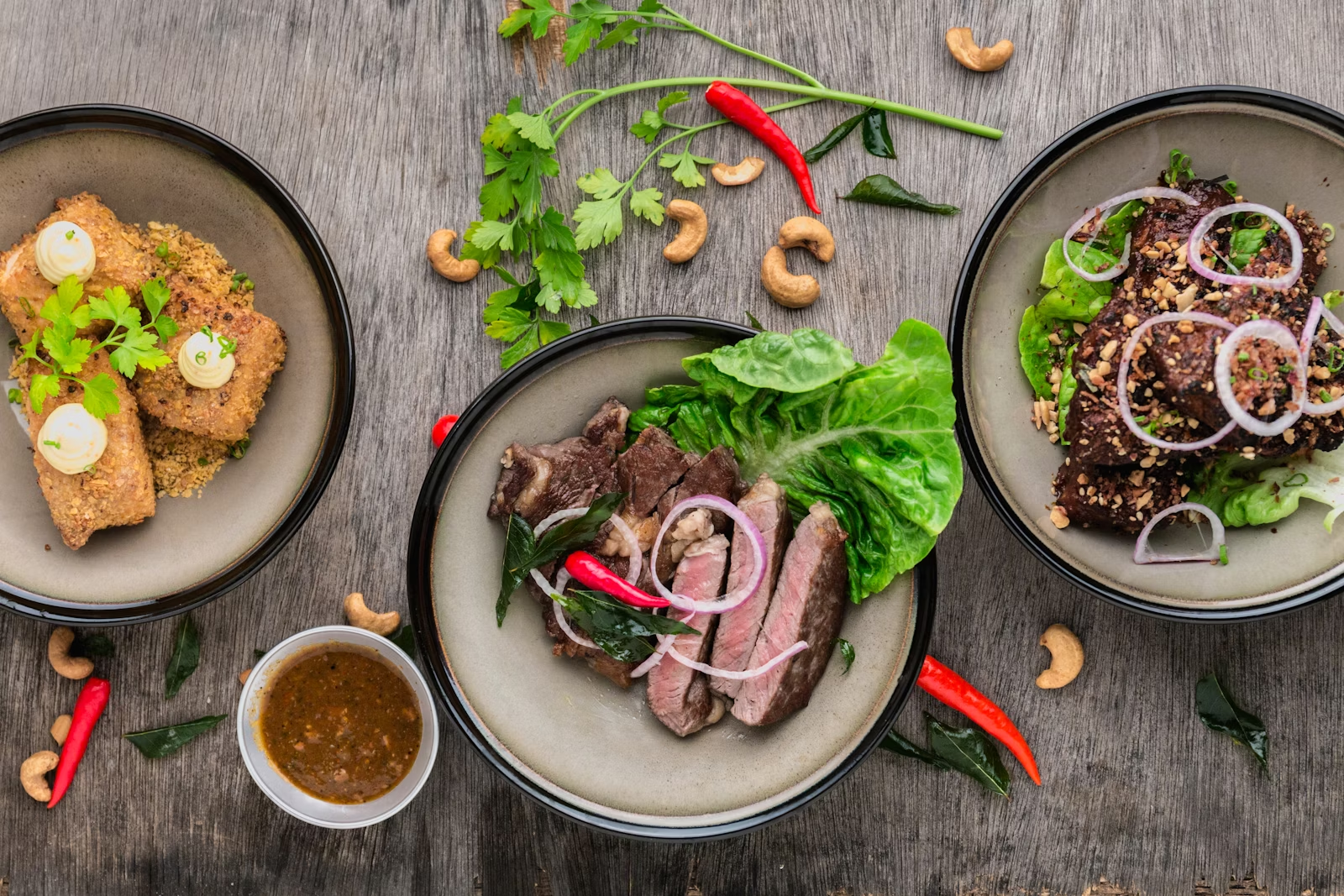
Healthy meal prep turns good intentions into everyday meals you can actually stick to. By planning once, cooking in batches, and packing portion‑controlled boxes, you save money and avoid last‑minute choices that don’t match your goals. This guide covers weekly planning, safe storage, reheating, and simple flavor formulas—without miracle claims. You’ll get practical steps to keep your fridge stocked with balanced lunches and dinners that support steady progress.
Key concepts & benefits
Prepping in advance reduces decision fatigue and improves calorie accuracy. A simple template per box is ½ vegetables + ¼ protein + ¼ smart carbs + 1–2 tsp healthy fats. This keeps calories predictable while maintaining fullness. Many people report that having ready meals cuts delivery spending and lowers snacking—because your next meal is already waiting.
Nutrition basics worth bookmarking: USDA MyPlate and Harvard—Healthy Weight.
Step-by-step guide
Step 1 — Weekly planning
- Pick 2 proteins: e.g., chicken breast and extra‑firm tofu.
- Pick 2 carbs: brown rice and sweet potatoes.
- Pick 3–4 vegetables: broccoli, carrots, bell peppers, leafy greens.
- Schedule a 2‑hour prep block: one roasting pan, one pot, one skillet.
Step 2 — Shopping list & budgeting
Write quantities by portions, not guesses (e.g., “10 lunch boxes = 10 protein servings”). Favor versatile ingredients that can switch flavors with sauces and spices.
- Pantry: olive oil, vinegar/lemon, garlic, onion, spice blend.
- Proteins: chicken, eggs, tofu, beans/lentils.
- Carbs: brown rice, quinoa, sweet potatoes, whole‑grain pasta.
- Veg: sturdy veg for roasting + leafy greens for quick sautés.
Step 3 — Batch cooking & portion control
- Oven: roast proteins and vegetables on separate trays.
- Stovetop: cook a pot of grains and a quick pan sauce.
- Portioning: use a 1‑cup scoop for carbs, palm‑size protein, generous veg.
- Labeling: date + contents; stack boxes by day (Mon–Fri).
Step 4 — Cooling, storage & reheating
- Cool quickly; refrigerate within 2 hours.
- Store 3–4 days in the fridge; freeze up to 2–3 months.
- Reheat to steaming; add fresh greens/herbs after heating.
- Keep dressings separate to maintain texture.
Tips, common mistakes & fixes
- Mistake: bland boxes. Fix: rotate sauces (lemon‑herb, chili‑garlic, yogurt‑tahini) for variety.
- Mistake: soggy veg. Fix: roast at high heat (420–450°F / 215–230°C), keep space on the tray.
- Mistake: guessing portions. Fix: scoop carbs; weigh proteins once to learn your visual cue.
- Mistake: unsafe storage. Fix: shallow containers, quick cooling, clear labels and dates.
Tools & recommended resources
- Containers: BPA‑free plastic or tempered glass; 700–900 ml per box.
- Kitchen scale: quick portion checks (use sparingly; build visual habits).
- Sheet pans + parchment: fast batch roasting and easy cleanup.
- Food safety: see FDA—Safe Food Handling and FoodSafety.gov—Storage.
- From our site: MonetizeWorks Blog • Contact • Privacy Policy.
3 ready-to-use meal prep menus
1) Lemon‑Herb Chicken + Brown Rice + Roasted Veg
- Protein: 120–150 g chicken breast, lemon, garlic, herbs.
- Carb: 1 cup cooked brown rice.
- Veg: broccoli + carrots roasted; drizzle 1 tsp olive oil.
- Flavor add‑ons: parsley, lemon wedge, chili flakes.
2) Tofu & Quinoa Power Bowls (vegan)
- Protein: extra‑firm tofu, pressed and roasted.
- Carb: 1 cup cooked quinoa.
- Veg: bell peppers + zucchini + spinach.
- Sauce: yogurt‑tahini (or dairy‑free tahini + lemon + garlic).
3) Turkey Chili & Sweet Potato Mash
- Protein: lean ground turkey chili (beans optional).
- Carb: ¾–1 cup sweet potato mash.
- Veg: corn + peppers + tomatoes in the chili; side greens for crunch.
- Storage: chili freezes well; add fresh herbs after reheating.

FAQ
How many days do meal‑prepped boxes last?
Most cooked meals keep 3–4 days refrigerated if cooled quickly and stored in shallow, airtight containers. Freeze portions you won’t eat in time (2–3 months). Reheat to steaming hot and add fresh greens or herbs after heating to restore texture. Always check smell and appearance before eating.
What’s a good calorie target for a lunch box?
For many people, 400–600 kcal at lunch balances energy and satiety. Use the template: half the box veggies, palm‑size protein, a 1‑cup scoop of carbs, and 1–2 teaspoons of fats. Adjust up or down based on your day (e.g., training days vs. desk days). Consistency beats precision—stick to a repeatable layout you enjoy.
How do I keep vegetables from getting soggy?
Roast at high heat, avoid crowding, and keep dressings separate. Add quick‑cooking greens (spinach, arugula) after reheating. For bowls with raw components, pack wet elements apart and assemble at eating time. Texture management is as important as flavor for long‑term adherence.
Can I meal prep without a microwave?
Yes. Choose meals that reheat well on the stovetop (chili, stews) or that can be eaten cold (grain salads, roasted veg + protein). Insulated food jars keep soups hot for hours. If you’re at the office, check for a communal oven or ask about safe reheating options.
Conclusion & CTA
Healthy meal prep is a system, not a one‑time challenge. Plan one prep block, cook smart batches, portion consistently, and keep flavors rotating. Over weeks, these simple, repeatable actions reduce stress and help you align daily meals with your goals—without strict rules or miracles.
Want printable planners and new recipes? Join our newsletter on the MonetizeWorks Blog and grab our free Meal Prep Starter Checklist.
Helpful links: USDA MyPlate • FDA—Safe Food Handling • FoodSafety.gov—Cold Storage